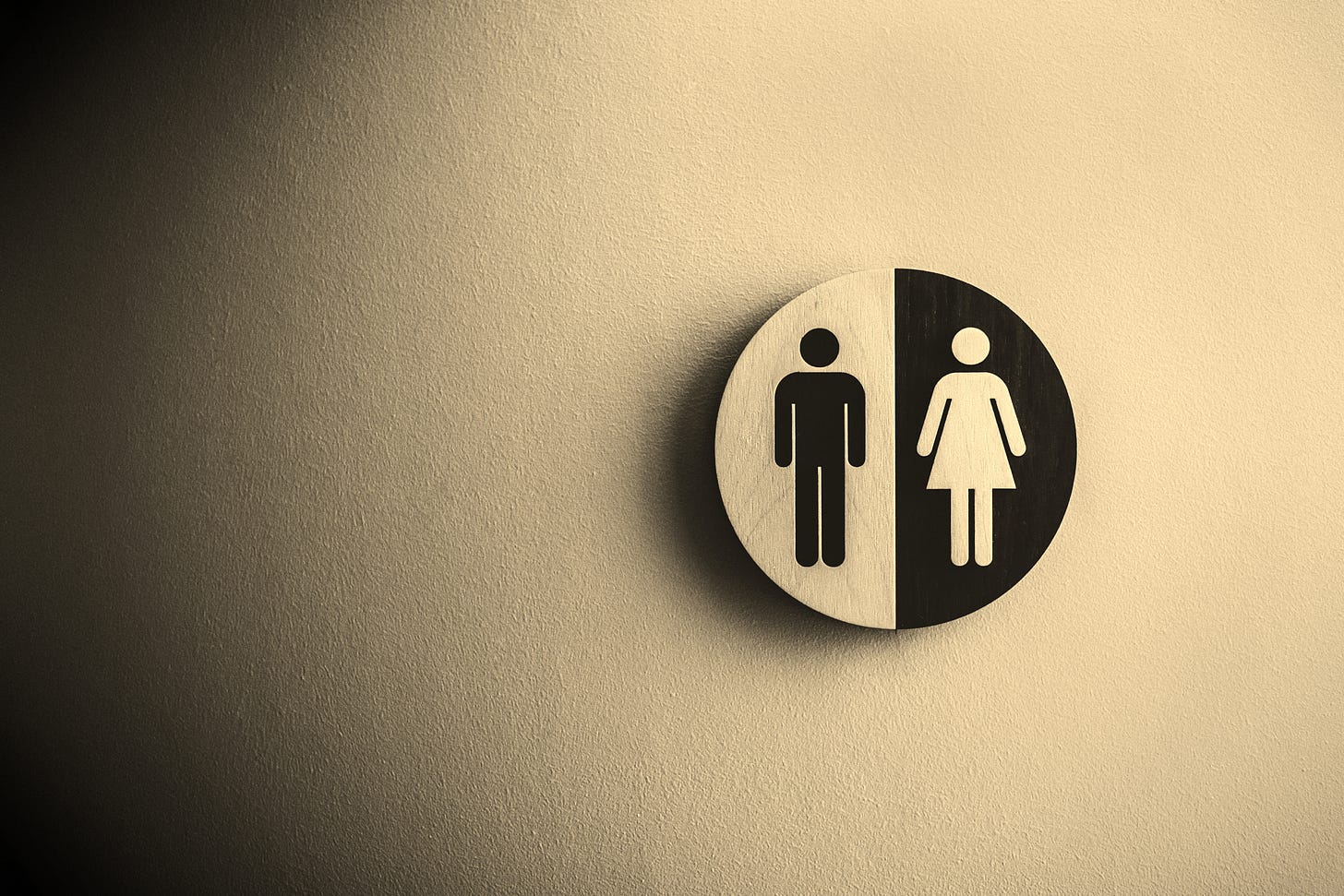Open Manuscript Notes, #3
An excerpt on the problem of woke gender conceptions
As previously mentioned, I’ll be providing to paid supporters working notes and occasional excerpts of my manuscript-in-progress.
Earlier editions of this series are here: #1 #2
What follows is an excerpt from a chapter discussing the matter of “declarative” gender. This is a very new idea (within the last three decades, but really only in currency in the last five to ten years) about gender and sexual difference, and one that forms a core belief of woke ideology.
The question of gender identity is probably the most contentious of the current identity categories for the left, and also perhaps the most internally incoherent. Undoubtedly, this incoherency is at least partially due to its very recent creation as an ideological concept, much newer than race and class.
Though this may seem surprising, the word “gender” itself only came into common use to reference sexual difference in the early 1900’s. Before then, “sex” was the dominant term, but as noted by etymologists:
As sex (n.) took on erotic qualities in 20c., gender came to be the usual English word for "sex of a human being," in which use it was at first regarded as colloquial or humorous. Later often in feminist writing with reference to social attributes as much as biological qualities; this sense first attested 1963.
Gender’s shift from a mere synonym for sex to describe biological or physical characteristics to a concept which also described social traits took several decades to fully manifest, but a second shift occurred famously (and in a famously obtuse way) in 1990, with the publication of Judith Butler’s book, Gender Trouble. Whereas in the previous few decades gender had come to be seen by feminists as the social reality of sexual difference, Judith Butler argued that gender and sex were both mere discursive subjects. That is, neither sex nor gender had any physical reality or existence outside of the way we thought about them and “performed” them in our lives and interactions.
To put this long transition more plainly: gender, which was initially just a polite synonym for sex, came to be seen through “second-wave” feminist writers as a term defining social aspects of sexual difference. A person was biologically male or female, but what made a man or woman on the social level wasn’t just their genitalia but rather their masculine or feminine expressions. This way of thinking led to a de-synchronization of the two concepts, such that you could be a “feminine” male or a “masculine” woman, and it also led to a de-prioritization of the physical or biological category of sex to focus instead on the study of gender and gender relations.
Judith Butler’s work led to the final severance of the link between these two categories, but it went even further than this. Rather than merely suggesting (social) gender and (physical) sex were unrelated to each other, Butler argued that neither of these concepts referred to any physical reality at all. Gender and sex—and the differences they described—were mere constructs, artificial categories humans created. We only performed or acted out gender and sex, and it was our “performativity” which gave these concepts any semblance of life.



